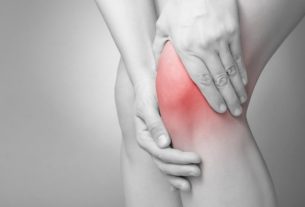Female urinary incontinence is the involuntary loss of urine, causing symptoms such as loss of urine on clothes after exertion or after a sudden urge to urinate.
This condition can affect women at any age, but is more common after the age of 45, caused by weakening of the bladder and/or pelvic floor muscles or menopause, for example.
Read too: Urinary incontinence: what it is, symptoms, causes, types and treatment
The treatment of female urinary incontinence is carried out by a gynecologist or urogynecologist, and varies according to its cause, and pelvic physiotherapy, medication or even surgery may be indicated.

Symptoms of female urinary incontinence
The main symptoms of female urinary incontinence are:
- Loss of a small amount of urine when coughing, sneezing or laughing;
- Loss of urine when exercising or lifting heavy objects;
- Urgency to urinate, without any sign of urinary infection;
- Difficulty holding urine;
- Sudden and uncontrollable urge to urinate;
- Sensation of incomplete emptying of the bladder.
Female urinary incontinence can also affect a woman’s quality of life and cause anxiety or depression.
Therefore, it is important to consult a gynecologist whenever symptoms of female urinary incontinence appear, so that the most appropriate treatment can be diagnosed and indicated.
How to confirm the diagnosis
The diagnosis of female urinary incontinence is made by a gynecologist or urogynecologist through evaluation of symptoms, health and obstetric history, age and use of medication.
In addition, the doctor must perform a gynecological and pelvic examination.
Make an appointment with the gynecologist in the region closest to you:
Taking care of your health has never been easier!
Generally, no additional tests are necessary, however, the doctor may ask to rule out other health conditions or detect the cause of incontinence.
Thus, urine tests, renal ultrasound, urea and creatinine measurement, urodynamic study or voiding cystourethrography, for example, may be requested. Find out how voiding cystourethrography is performed.
Read too: Urodynamic study: what it is, when it is indicated, how it is done and preparation
Possible causes
The main causes of female urinary incontinence are:
- Pregnancy or multiple births;
- Obesity or diabetes;
- Overactive bladder;
- Spinal cord injuries;
- Neurological changes, such as Parkinson’s disease or stroke;
- Bladder obstruction, due to abdominal tumors or urogenital prolapse.
Additionally, menopause is a common cause of female urinary incontinence, as changes in estrogen levels can affect the bladder and urethra. See other changes in menopause.
Types of female urinary incontinence
The main types of female urinary incontinence are:
1. Stress urinary incontinence
Stress urinary incontinence occurs due to an increase in intra-abdominal pressure due to a weakening of the urethral sphincter and/or pelvic floor.
Typically, urine loss occurs when sneezing, coughing, laughing or lifting weights, for example, and is very common during pregnancy.
Read too: Urinary incontinence during pregnancy: symptoms, causes and treatment
2. Urge urinary incontinence
Urge urinary incontinence involves difficulty retaining urine, accompanied by an urgent need to urinate or increased urinary frequency, so that it is not possible to reach the bathroom in time.
This type of urinary incontinence can occur due to bladder irritation or loss of neurological control.
3. Mixed urinary incontinence
Mixed urinary incontinence is the presence of stress and urgency urinary incontinence at the same time.
4. Overflow urinary incontinence
Overflow urinary incontinence occurs when urine production is greater than the bladder’s storage capacity, causing urine to leak.
This type of urinary incontinence can arise due to neurological diseases or bladder outlet obstruction.
Read too: Urine leak: what it could be (and how to treat it)
How the treatment is carried out
Treatment for female urinary incontinence must be carried out under the guidance of a gynecologist or urogynecologist and aims to alleviate symptoms and improve quality of life.
The main treatments for female urinary incontinence are:
1. Kegel Exercises
Kegel exercises are indicated to strengthen the pelvic floor muscles, improving or preventing involuntary loss of urine. See how to do Kegel exercises.
Read too: 6 exercises for urinary incontinence (and how to do them)
These exercises must be done daily and can be performed in any position, whether sitting, lying down or standing, and can even be performed with the help of gymnastics balls.
Watch the following video with physiotherapist Marcelle Pinheiro with tips on how to do Kegel exercises correctly:
2. Urogynecological physiotherapy
Urogynecological physiotherapy may be recommended by a gynecologist for female urinary incontinence, as it helps to strengthen the pelvic floor muscles and improve bladder control.
This type of treatment must be carried out with the guidance of a physiotherapist, with specific exercises or even intravaginal electrical stimulation or biofeedback. Check out how physiotherapy for urinary incontinence is done.
3. Medicines for urinary incontinence
Medicines for urinary incontinence, such as duloxetine, oxybutynin, mirabegron or trospium chloride, may be prescribed by the doctor to prevent involuntary loss of urine.
These medications act on the bladder muscles, reducing involuntary bladder contraction and improving the action of the urethral sphincter, for example. See all remedies for urinary incontinence.
In cases where urinary incontinence is related to menopause, the doctor may also recommend hormone replacement therapy.
Read too: Hormone replacement therapy: what it is, what it is for and how it is done
4. Pessary
A pessary is a plastic or silicone device that provides support for the bladder, which can be used by a doctor to relieve female urinary incontinence symptoms.
This device is inserted into the vagina by the gynecologist, and is recommended when surgery is to be avoided or postponed, or the woman has health problems making surgery risky.
Read too: 7 tips for controlling urinary incontinence
5. Surgery
Surgery for female urinary incontinence may be indicated in the most serious cases, when other treatments have not been effective in relieving symptoms.
This type of surgery can be performed using different techniques, such as placement of sling, microballoons or creating an artificial sphincter, for example. See how surgery for urinary incontinence and recovery is performed.

Sign up for our newsletter and stay up to date with exclusive news
that can transform your routine!
Warning: Undefined array key "title" in /home/storelat/public_html/wp-content/plugins/link-whisper-premium/templates/frontend/related-posts.php on line 12
Warning: Undefined array key "title_tag" in /home/storelat/public_html/wp-content/plugins/link-whisper-premium/templates/frontend/related-posts.php on line 13



